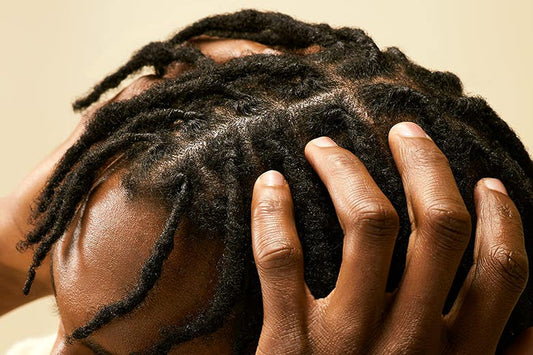Just like understanding your skin type is crucial for implementing an effective skin care regimen, determining your hair type is important to optimize your hair care and styling routine. No sure what type of hair you have? There are a few things to keep in mind: texture, formation, density and length.
Hair Texture
This refers to the width of an individual strand of hair and falls into three classifications: fine, medium and coarse. Identify your hair texture by rolling a single strand of hair in your finger.
- If your hair is Fine (A), you won't feel it.
- If your hair is Medium (B), you will slightly feel it.
- If your hair is Coarse (C), you will feel it.
Hair Formation
This describes the shape or pattern of your hair strand. Identify your formation by allowing your hair to air-dry without any product.
- If it dries without any bends or curls, then it's Straight (1).
- If it dries with bends or an "S" shape, it's categorized as Wavy (2).
- When it dries and you see curls/loops, it's Curly (3).
- If it dries with coils or compacted spirals, it's Tight Curly (4).
Once you've identified both, normally the formation goes first followed by the texture to identify your basic hair type. For example, 2C would be Wavy, Coarse as seen in the chart below.
Hair Density
This is the number of hairs you have on your head per square inch, with the average person having anywhere between 80,000-120,000 strands. Knowing your hair density can help determine what type of hairstyles, products and tools will work best for your hair type. For example, if you have low-density hair, you may want to add thickness with the best volumizing hair products, etc. Identify your hair density by measuring the circumference of your ponytail.
- If it's less than two inches, you have low-density hair.
- If it's two-three inches, you have medium-density hair.
- If it's four inches or more, you have high-density hair.
If your hair is short, part it with a comb. If you can easily see your scalp, you have low-density hair; if you can't, you have high-density hair.
Hair Length
Knowing your hair length is also key when it comes to styling and caring for your unique hair type. Take a look at the image below to identify your hair length.
Once you have identified exactly which categories your hair falls in, you can begin a more targeted approach to your hair care and styling routine to achieve your best hair ever.
If you're still unsure, get expert advice from a Paul Mitchell stylist at a salon near you.






